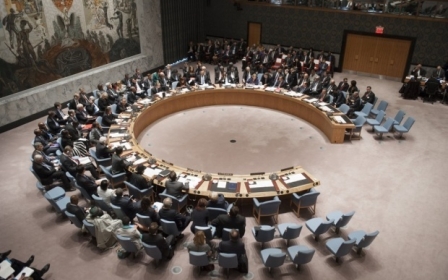Israelis seek ‘alternative solution’ to Susiya demolition

Khirbet Susiya, a small Bedouin village in the South Hebron hills with just over 300 residents, has drawn the world’s attention since 5 May, when Israel’s governing body in the West Bank COGAT issued the villagers with eviction and demolition orders.
The village first received orders in 1986 and has been subject to repeated evictions and demolitions since, as part of what residents and activists say is the Israeli authorities’ attempts to make way for the expansion of a nearby settlement.
On July 16, following a sustained outcry from Israeli and Palestinian rights groups and village residents, US State Department Spokesperson John Kirby told a room of reporters in Washington DC that the White House was “closely following developments in the Village of Susiya in the West Bank”.
Kirby added that the State Department, “strongly urge[s] the Israeli authorities to refrain from carrying out any demolitions in the village”.
“Demolition of this Palestinian village or of parts of it, and evictions of Palestinians from their homes would be harmful and provocative,” Kirby said. “We are concerned that the demolition of this village may worsen the atmosphere for a peaceful resolution and would set a damaging standard for displacement and land confiscation, particularly given settlement-related activity in the area,” Kirby levied.
The European Union and the United Nations have both followed suit and voiced concerns in response to the demolition notice handed down to Susiya by the branch of the Israeli Defence Forces which coordinates and oversees government activities in the West bank and Gaza.
Following a 20 July visit to the village, a European Union Council delegation issued a statement calling on Israeli authorities to, “halt plans for forced transfer of population and demolition of Palestinian housing and infrastructure in the Susiya and Abu Nwar communities”.
After meeting Susiya residents on 23 July, the United Nations’ Humanitarian Coordinator of the Occupied territory, Robert Piper, said: “The destruction of private property in an occupied territory is prohibited under international humanitarian law.
"I call on the Israeli authorities to suspend all demolitions of Palestinian structures in Area C and to provide its residents with a planning and permit regime that allows them to meet their needs."
Israeli pro-Zionist NGO Regavim says Palestinian claims to the land are baseless. Fact sheets on the organisation’s website argue, “The claim that this is an Arab village which existed hundreds of years, or even decades, is completely false. This rocky land on which this illegal encampment [Susiya] is situated served the purpose of grazing land.”
In light of statements issued by the international community and campaigns led by rights groups in Israel and Palestine, including Rabbis for Human Rights and B’Tselem, COGAT appears to have scaled back its stated intention of demolishing Susiya in its entirety.
In correspondence with Middle East Eye, a spokesperson explained that, “the group of the illegal buildings is about 15 houses.”
“The Coordinator of Government Activities in the Territories, Maj. Gen. Yoav (Poly) Mordechai, and representatives of the Civil Administration have met with the residents of Susya and their representatives in order to discuss the High Court's decisions and examine alternative solutions in accordance with the planning considerations,” COGAT told Middle East Eye. The Civil Administration previously stated it would demolish Susiya before August 3.
According to Israeli rights group B’Tselem, Susiya is only one among a number of Palestinian villages in Area C whose futures’ remain uncertain. The organisation’s field researchers have documented that COGAT has demolished no fewer than 876 of what the group describes as Palestinian residential units in the West Bank between 2006 and June 30 of this year. The demolitions left more than 4000 people without homes, including more than 2000 minors. The group’s figures do not include demolitions in East Jerusalem.
Despite statements made by governments abroad and a wave of solidarity closer to home, including a protest against the impending demolition which drew hundreds last week, Nasser Nawaja, Susiya resident and B’Tselem field research harbours doubts for the future of his village and family’s home.
Representatives of Susiya and Regavim are to meet on 11 August to discuss possible solutions.
Middle East Eye propose une couverture et une analyse indépendantes et incomparables du Moyen-Orient, de l’Afrique du Nord et d’autres régions du monde. Pour en savoir plus sur la reprise de ce contenu et les frais qui s’appliquent, veuillez remplir ce formulaire [en anglais]. Pour en savoir plus sur MEE, cliquez ici [en anglais].




